I live in Silicon Valley, high-tech central. Almost everyone I know is an engineer, married to an engineer or divorced from an engineer. I see more Teslas here than minivans. When the tech-heavy NASDAQ has a really, really bad day, stores like Fry’s Electronics (geek central where you buy parts to build your own computer) have a really, really bad day. I see people wearing Google Glass in public on a regular basis. Even I, near-luddite, have tried it.

Don’t get me wrong, I love living here and I like technology (mostly). But I get more excited by really old (and really smart) technology. Like grist mills.
The Bale Grist Mill
This past week, my kids and I visited Napa Valley, a foodie’s paradise. On our way home, we stopped for a tour of Bale Grist Mill, now a state historic park. Built in 1846, the water-powered mill once served as an important social hub in the area. Local farmers brought in their grain for milling, caught up with their neighbors and shared news and gossip. They paid the miller a 6 percent, in-kind fee (people didn’t use money much) to grind up grains such as wheat, corn, buckwheat and rye. Today, the mill still grinds grain, but only on Saturdays.
How the Mill Works
Above is a picture of the underside of the flume. In the old days, water ran down this flume from ponds up in the hills behind the mill. The water would then fall over the water wheel, causing it to turn. Today, the park no longer owns the water rights to those ponds, so it pumps water up to the top of a shortened flume, which runs down and falls over the wheel in the same way as it had in pioneer times. A pump then sends that water back to the top of the flume, creating a closed system that recycles the water.
The big wooden wheel outside the mill turns these wooden gears under the floor inside. They were (and are) made of wood because if a wooden gear broke down, it could be repaired easily compared to a broken-down metal gear, and the mill could get up and running again quickly (time was money in 1846 too).
These gears make everything else in the mill turn. A grist mill is an amazing example of simple clean-tech powered by only water assisted by gravity.
Those first gears turn the gears above. Turned by that second set of gears, wheels with long belts are all over the place, powering the equipment and making the whole process work. 
I didn’t catch everything our excellent tour guide told us, but I’m pretty sure that in the pic above, the spinning cylinder with the mesh cover cleans the grain. Centrifugal forces separate the grain from dirt.
The clean grain then falls down a chute to the hopper. You can’t make it out very well above, but the hopper is the inverted wooden pyramid perched above the big round contraption.
Inside that round wooden compartment sit two grinding stones—one fixed on the bottom and one that rotates above it. The grain falls between the grindstones through the hopper. As the top grindstone turns, it crushes the grain. The width between the stones (the thickness of six sheets of paper versus the thickness of two sheets of paper) determines the coarseness of the flour.
Ground flour then falls out a wooden chute into a large bag. I didn’t quite get a shot of that—my daughter had to go to the bathroom just then—but you can see the flour that missed the bag and spilled on the floor. It smelled wonderful—warm, fresh and bread-like.
From there, the flour is conveyed to the top floor, where it goes to the bolter, the long cylinder in the right of this photo. The bolter separates the flour into different types—pastry flour or bread flour (for the wealthy), middling flour (what most people ate) and bran (for the pigs—they ate the healthiest part). Each type goes down its own chute and into bins below.

The design of this particular mill comes from the very old book The Young Mill-Wright and Miller’s Guide. In the back of the book, you’ll find the above list of satisfied customers (kind of like an 1800s version of Yelp).
At the end of 2013, a bill that would have exempted the mill from state health codes—thus allowing it to sell its freshly ground flour to the public—failed. Modern health codes require food establishments to be made of steel and concrete—not wood like the mill. As a compromise, the mill can exchange a souvenir bag of flour to visitors for a donation of five dollars…
…as long as no one eats it. You can read the whole story here.
I bought four bags, one each of whole wheat bread flour, pastry flour, rye flour and buckwheat flour. (Yes, it’s packaged in paper, but I’ll reuse the paper somehow—no way I was not buying the mill’s flour). This week, I’ll use my flour to bake sourdough bread (likely to be the best ever) and enjoy a slice with a glass of raw milk and feel like a rebel.


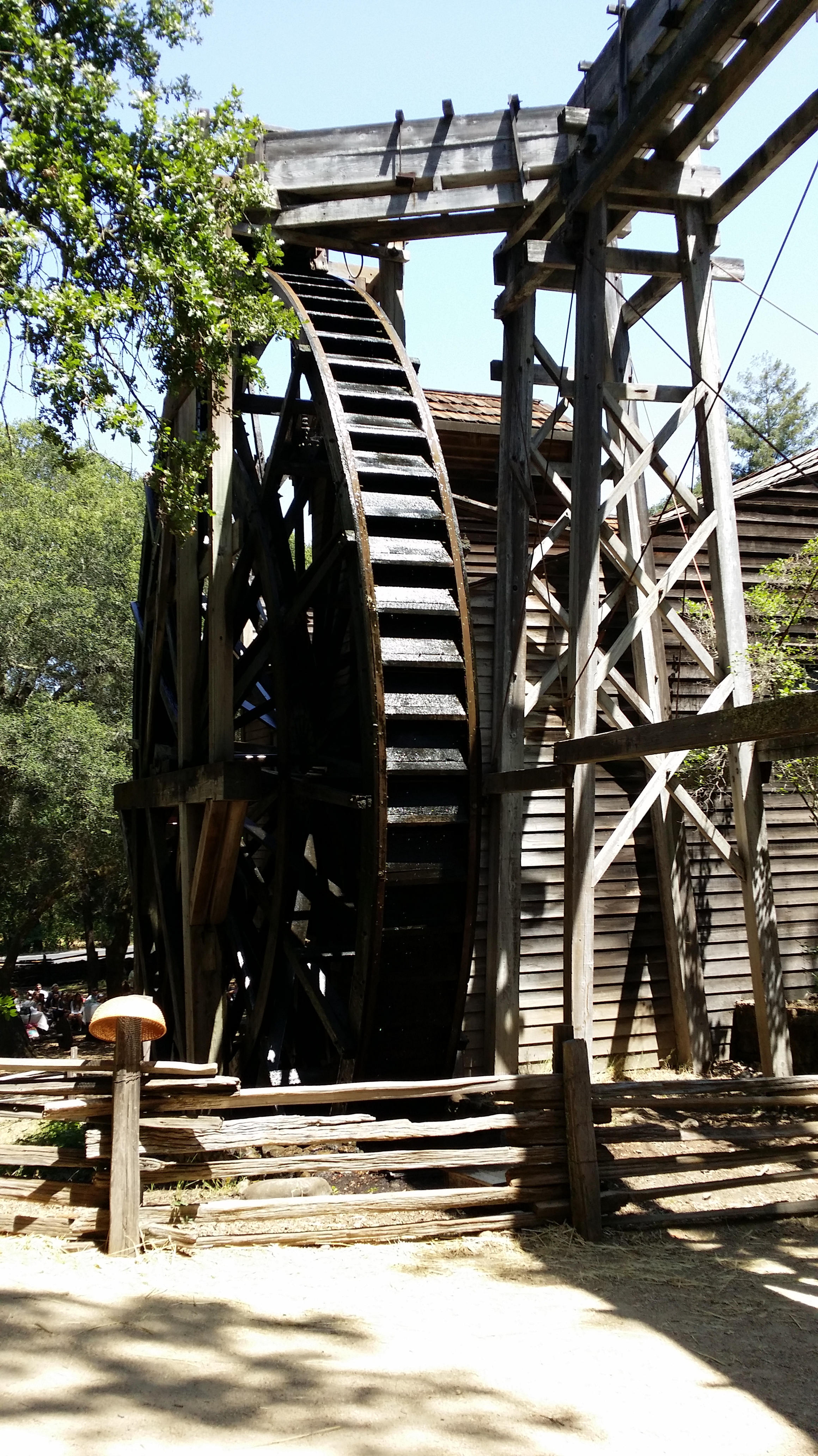


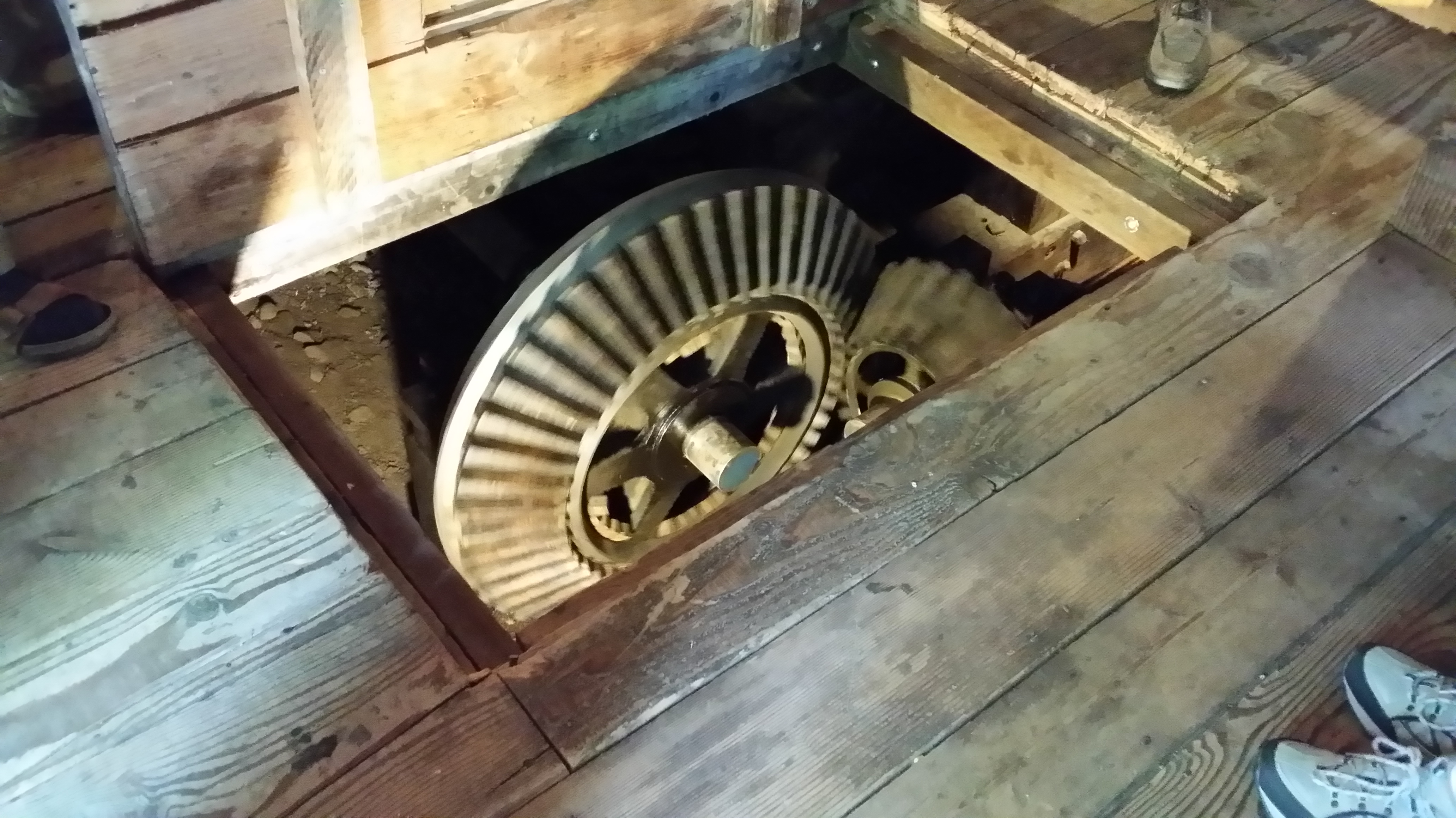
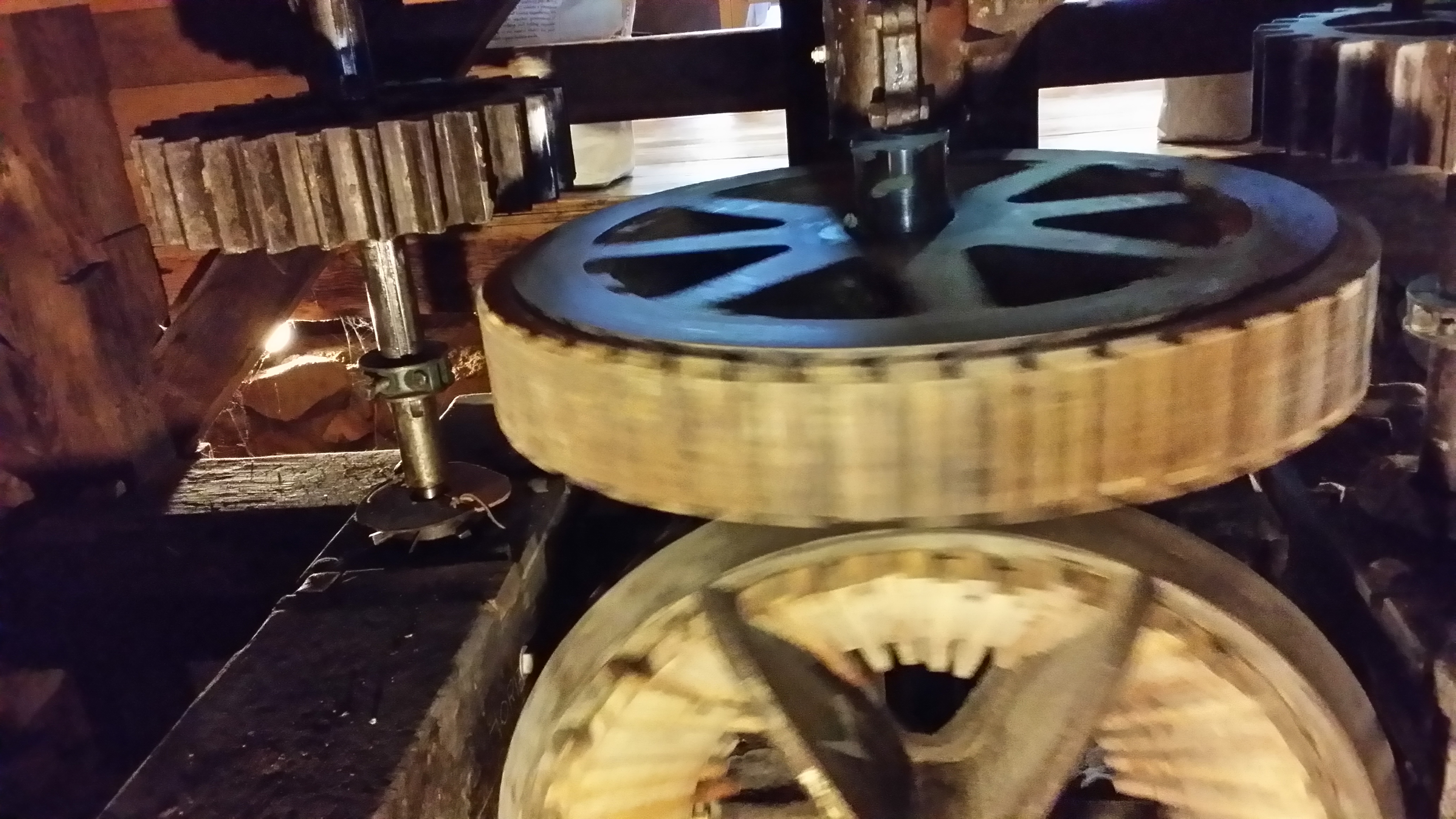


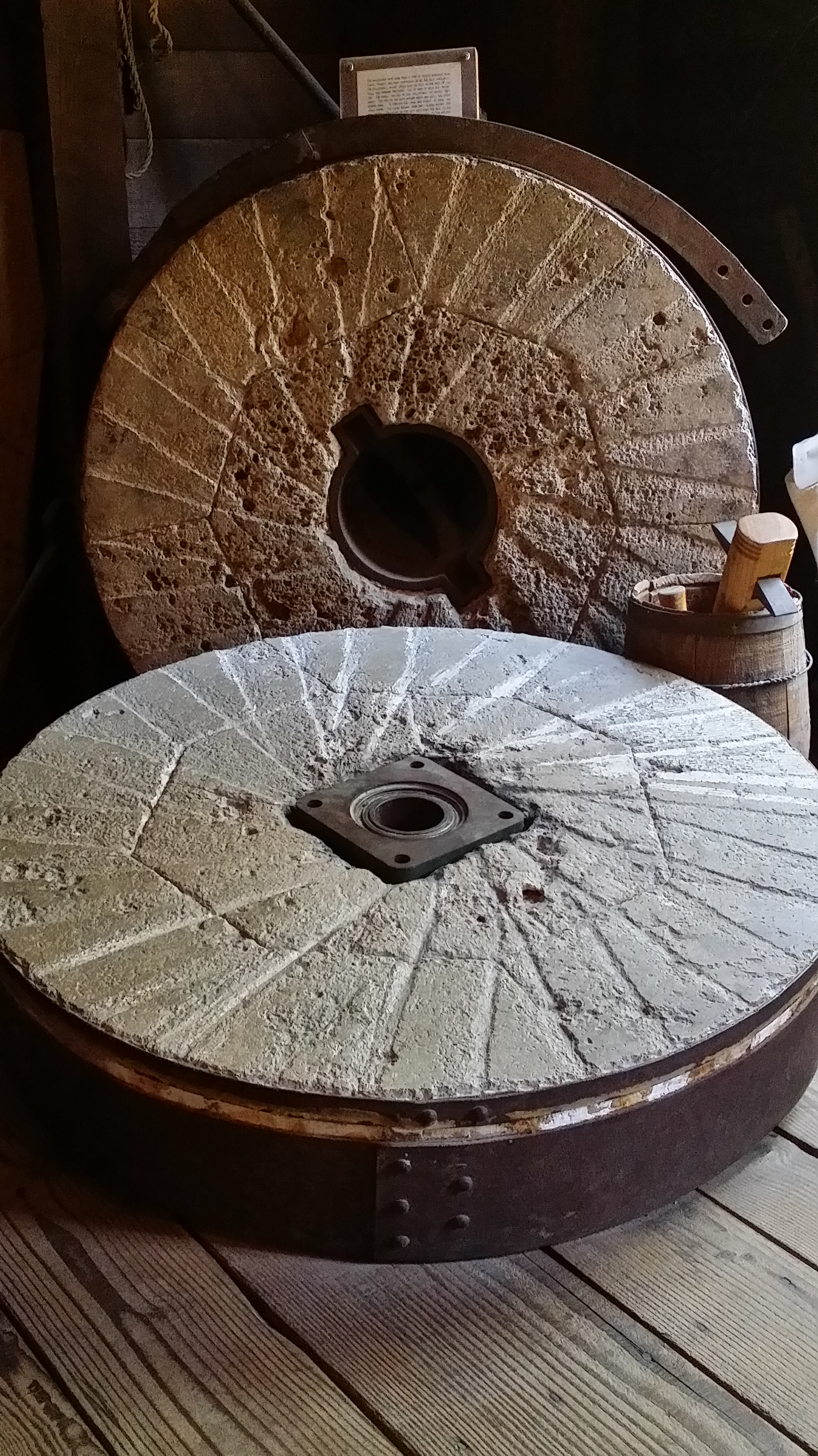

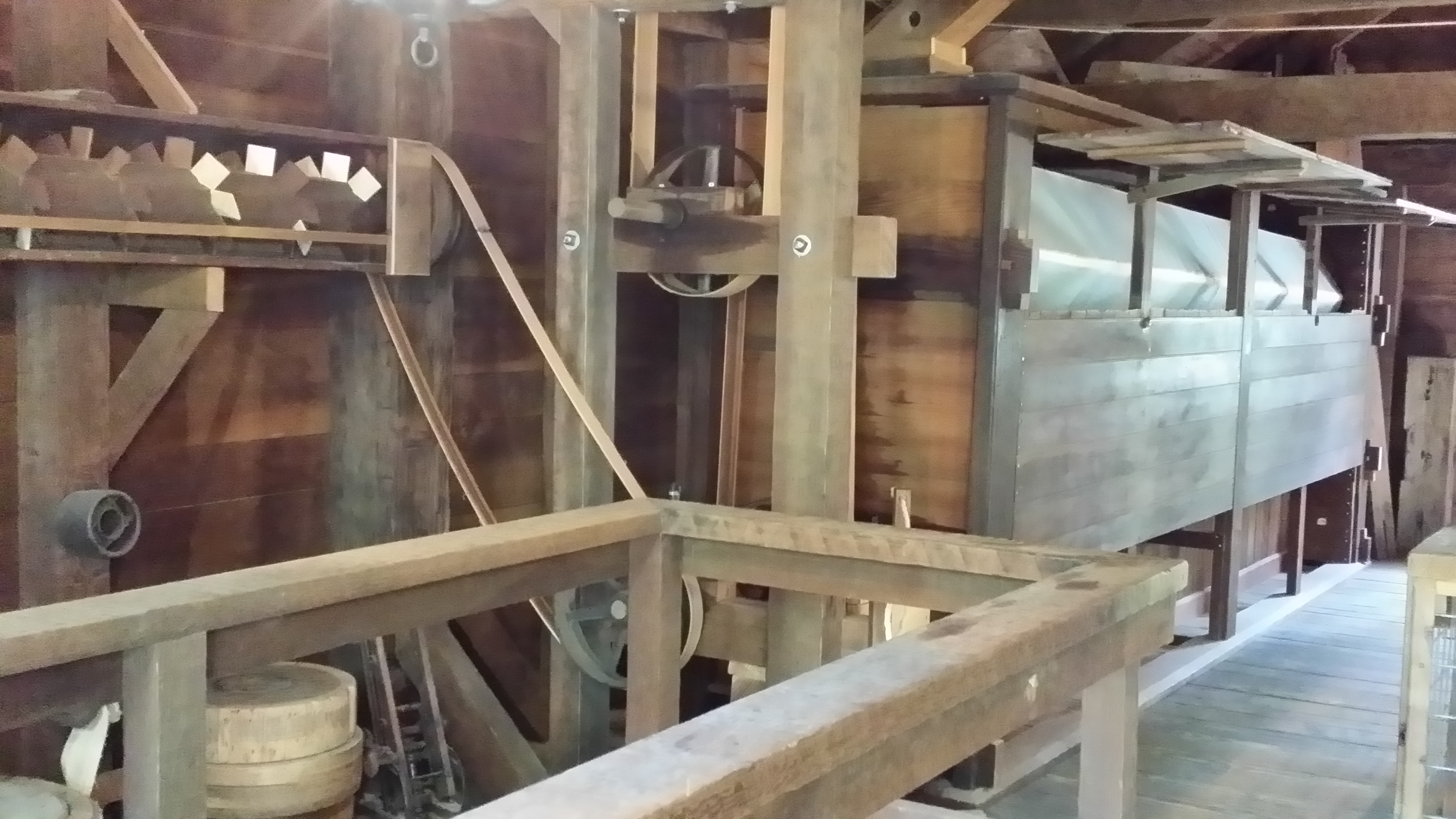
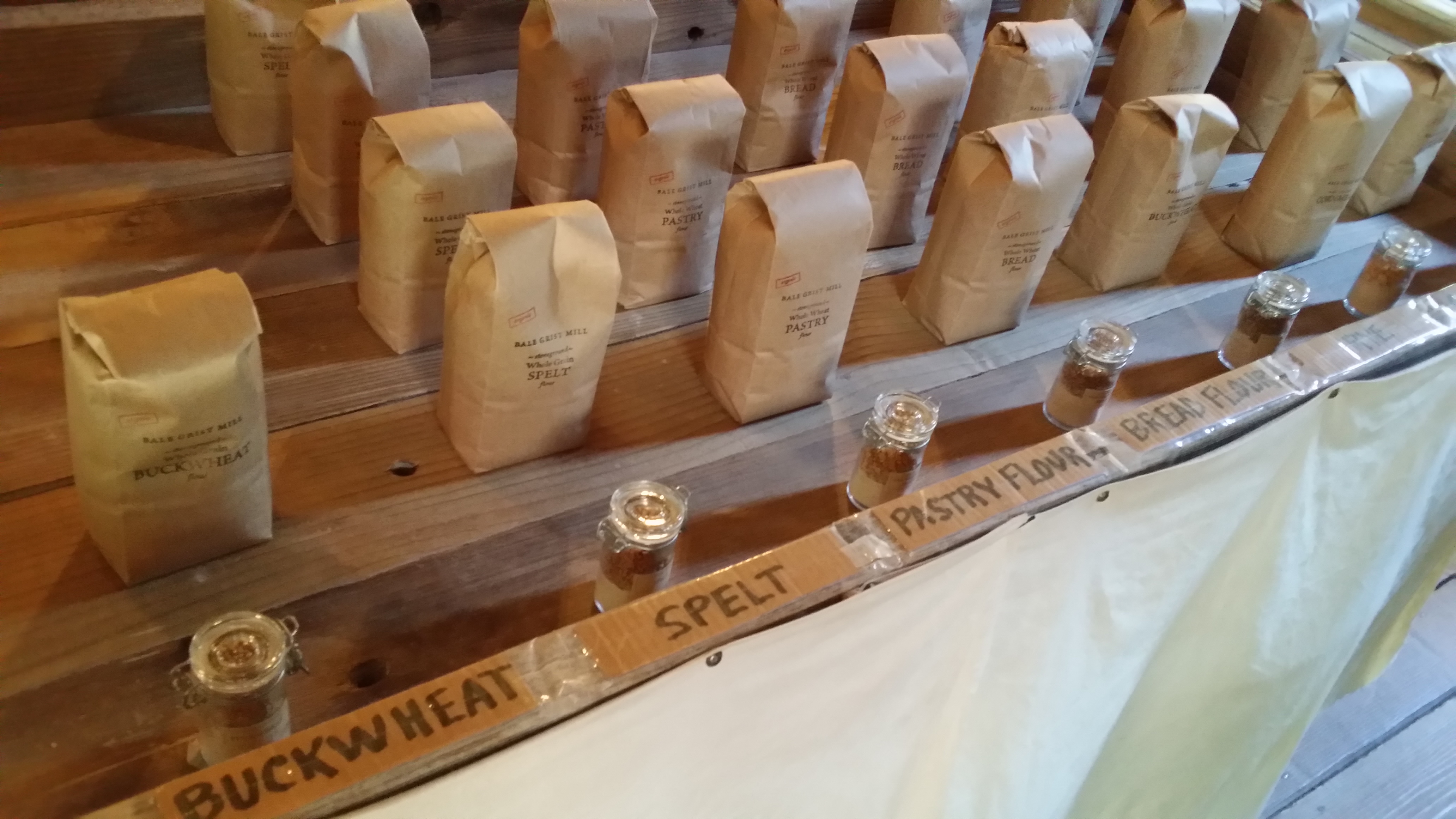

I really enjoyed reading this post and I’m very happy that you’re going to use the flour! It’s a shame that these mills aren’t exempt but I’m sure your sourdough bread will taste amazing!
Thank you! I agree it’s a shame. I hope that eventually the powers that be will come to their senses.
So silly that it is labeled so. In Europe the older the mill, the more desirable the flour! Nice post!
I agree it’s silly. I may have to move to Europe 🙂 Thank you for the comment.
Great post. Very interesting what is considered consumable, when you think of all the garbage that is allowed in processed foods, yet this traditional way of grinding flour isn’t safe, ha!
Thank you 🙂 I agree, it’s completely absurd!
I’m writing to let you know that I have nominated you for the Very Inspiring Blogger Award. I think your blog is very worthy of that recognition.
I don’t know if you know about nominations/awards, etc. but it’s a way for bloggers to show their appreciation for other bloggers. It is also a way for other people to find out about your blog, and the blogs of people you may choose to nominate.
You can get more information about your nomination and the Very Amazing Blogger Award process at http://livinglearningandlettinggo.wordpress.com/2014/06/02/thanks-for-the-very-inspiring-blogger-award/.
:O
Thank you so much! I really appreciate it. I hadn’t heard of this until now. I will check it out. Thanks again 🙂
I really liked your blog and look forward to learning more from you!
Thank you! I’m glad you enjoy my blog. I love writing it!
I have a definite soft spot for food that’s not legal. Our food rules are insane.
Me too 🙂
I agree, our food rules are nuts. I like to think they are changing though.
That is just too darned cool. It’s a shame that we can’t choose what we eat like that anymore, even if all the details of the manufacture of the food is made public.The mill’s workaround is very clever, though. I can only hope to see more enterprises like this start to spring up again!
Thanks for the comment! I was completely fascinated by the mill. It’s just such a smart piece of engineering. And I agree, it’s ridiculous we can’t choose what we eat. The only way to do so is to grow our own food and I’m not in a position to do that. So, I shop at the farmer’s market as much as possible and make everything from scratch.
The Bale Grist Mill is the last operational grist mill in California, but who knows? Maybe other mills will spring up in the future when we’ve run out of oil. I would love to live in a building with a water wheel! And apparently there’s a market for them (I had no idea). I saw a magazine at the mill dedicated to mill preservation, with a few ads in it from companies that make and restore water wheels! So cool.
I absolutely Loved this article 🙂 Your photos are amazing too. I love visiting the old Gris Mill here in Mass (made famous by Longfellow’s Wayside Inn) They are still able to sell their flour. Here is a link to the history of the Mill. http://www.wayside.org/history/gristmill
Thank you for the article and the comment 🙂 I would love to visit the mill in Mass. Maybe I should plan a mill tour and visit mills all over the US and Canada. That would be a fantastic trip!
I stumbled across your delightful article via the Freecycle page on Facebook, and read it with great interest. My eighth-great-grandfather, Edward Howell, built a mill in Southampton, Long Island, in the early 1640’s, and at a recent family reunion we had the chance to visit the mill (now a museum) to learn about its history and operation. After reading about your experience with a still-opearating mill, I so wish that I could buy flour that had been ground in my great (x 8)-grandfather’s mill!! You can read a little more about it here, if you care to do so: http://watermillmuseum.org/history_mill.htm
I am definitely interested in reading more of what you have written! Thank you for sharing this story with us!
Thank you for your kind comments and for the link to the article. I’m glad you enjoyed mine! I was awfully happy this morning when I saw it on Freecycle’s Facebook page.
What a wonderful connection you have with that historic mill! It’s 200 years older than the one I visited. I would love to see it. I think I’ve found a new travel niche: eco-mill tourism 🙂 And thank goodness the woman’s group restored your great^8 grandfather’s mill. Had your family always known about the connection or did you or a relative research your family’s genealogy?
Love the eco-mill tourism idea! Would be interesting to learn the number of old mills that are still in operation, cranking out flours (“edible” or not!!)
Regarding my family’s genealogy: my 8th great-grandfather, Edward Howell, was a big shot in his day out on the eastern tip of Long Island. He was part of a party of English settlers who left Lynn, Massachusetts in 1640 to settle what is now Southampton, NY. They were the first English settlers on Long Island. Today, there is an Edward Howell Family Association, consisting of his direct descendants. Every year there is a family reunion in a different place in the United States, and it was four years ago that we convened in Southampton and visited our ancestor’s mill.
Thank yo for your interest! I’m enjoying receiving your e-mails!!!
Thank you! I did see a (quarterly?) magazine at the mill dedicated to the preservation of grist mills. I can’t recall the name of it though. I think with the local food movement gaining steam, more and more people are interested in these old (smart) ways of doing things. That family reunion sounds like a lot of fun. It must be huge! Where will the reunion be this year? Thank you for reading my blog. I’m so glad you’re enjoying it. I’m so enjoying writing it!
It’s amazing what Americans consider fit or unfit for human consumption. It’s funny, not that I thought you were eating fast food, but my first thought when I read the headline was of fast food. Ha! Oh right, most people think that IS fit for human consumption! Anyway, wonderful post. Your philosophy is refreshing and writing so pleasant and enlightening. Cheers to good food!
Ha ha. Well, that’s good you thought of fast food first because then my punchline has a bigger impact 🙂 Yes, Big Macs, super-size fries and vats of soda are deemed okay. It’s that organic, stone-ground rye flour from the historic mill that will do you in. Thanks for the comment. I’m glad you liked the post.
Thanks for visiting and following my blog and leading me to yours. I really enjoyed this articles, first because of my own interest in this sort of technology, and second because you point out the absurdity of some of our cultural trends. I’m glad you were able to ‘trade’ for this flour, and I’m sure your bread will be excellent. I look forward to reading more of your posts.
You’re welcome! My daughter makes dolmas and we need grape leaves for them, so now we will know how to go about it thanks to your blog.
I’m glad you enjoyed my post. Here’s a pic of the bread I made with the flour: http://ow.ly/xSBXl It was one of my best loaves and everyone who ate it survived. Thank you for following my blog 🙂
So excited to find your blog! I love making scratch food for my family and daycare kids, and we are trying to grow a lot of what we eat. It’s a fun and interesting journey! Can’t wait to see your next post!
Thank you so much! You have a lucky family and lucky daycare kids 🙂 I see from your blog the kids are learning to garden too. That’s wonderful!
What a great story, and a wonderful way to share a day with your daughter. Given the drought in California, they could convert it to an animal driven mill relatively easily I think. Or have guests push on the spokes of a wheel and walk in circles 🙂 You can get your exercise before buying your flour 😉
Thank you so much. I’m glad you liked it. Ha ha, good idea about the visitor-driven wheel. This year for her science fair, I told my daughter to harness the energy from a hamster running on its wheel to power an LED. She didn’t like the idea though 🙁
The mill DOES recycle the water. With our serious drought here in California, mill visitors would freak out if that water went down the drain. Instead, it gets pumped back up to the top of the flue and runs back down over the wheel. Thanks for the comment 🙂
I too wrote about a mill! Good to read your post!
Cool! I found the mill fascinating and the bread I made turned out really well. I’ll look for your post. Thanks for the comment.
It’s amazing to harness the natural energy to do work.
Our milled flour is fit for human consumption. It’s never seen a washable floor either!
I agree, this is a great example of lowtech cleantech.
Of course your flour is! You’re not in land-of-the-subsidized-bad-food U.S. Things are (slowly) changing here though.
The mills here are an intrinsic part of the culture. They are used for many different things. We also have a mustard mill for example and one that grinds dye for paint. I’ve done a couple of posts on them and hope to do more.
I would love to visit all of those mills. I look forward to your posts about them 🙂
I shall keep visiting them.
We’ve got a mill not too far away from us in Tasmania, dated 1837 so a similar vintage to this one. It was refurbished not too long ago, and is producing flour again. I must get around to taking their tour… http://www.callingtonmill.com.au/
Ooooh, it looks beautiful. Thank you for the link. The bread I baked with my milled flour was the best I have made. When you go, I hope you’ll take some pics and post them 🙂
Hi! Thanks for a wonderful post and glad that you rebelled…you deserve this delicious bread!
Thank you Jasmin 🙂 The bread was delicious. Stone ground flour is the best for making sourdough.
Go lady! A lot of these health & safety ordinances have nothing to do with H&S and everything to do with appeasing big business !
PS – If you are anything like me you have a strong appreciation for mechanical technology! I.e. stuff that with a little common sense & ingenuity can be fixed if it breaks rather than stuff that is redundant when you download a software update 😉
Thank you! These laws are ludicrous! Here in the US, the FDA keeps threatening to mess with artisanal (i.e., real) cheese. First it threatened to ban wooden cheese aging boards. People were outraged, so it pulled back. Now, it wants to ban soft French cheeses. We’re talking Roquefort (!). I guess the FDA discovered that cheese contains bacteria. Duh. That’s why it’s cheese and not milk! I’m convinced Big Food is behind it all. It’s embarrassing. I will emigrate before I eat Kraft cheese.
I do love all of this smart, long-lasting, common-sense technology. On a related note, yesterday, someone sent me a link to TEDTalk featuring an amazing, Sartre-quoting home-builder. I think you’ll like it: http://www.ted.com/talks/dan_phillips_creative_houses_from_reclaimed_stuff?language=en
A lot of folks in the UK & France are stunned that many raw milk cheeses are banned in the US as they’re deemed unsafe but firearms are permitted. I know it’s cultural but it’s something we cannot wrap our heads around 😉
I’ll check out the TED link. Cheers.
When I first moved to California, I couldn’t find silver dragees anywhere for the gingerbread Christmas ornaments I wanted to make. I went from store to store to store, when finally a clerk informed me that the governor at the time had recently banned them. My (Canadian) sister suggested I use bullets instead.
I like this article. I’m sure the lobbyists for the food industry had a lot with the labeling on the flour. Ridiculous!!
Thank you. I’m glad you liked it. I loved our trip to the mill. I agree with you about the labeling. The last thing the food industry wants is people buying real food.
I too have a love for mills and we grow grind and sell our own flours the more folks that buy their “Souvenir flour” the better. Its time for a consumers bill of rights!
Oh I envy you. That’s so awesome. I want to grind my own flour to take my sourdough to the next level. Do you by any chance have a recommendation for a home baker? I have to buy a mill online, so can’t test drive it. It’s crazy the type of “food” that’s protected in this country and what’s deemed unfit!